Digital India: How Technology Is Transforming The Nation By 2025
Digital India is more than a government initiative—it’s a movement that is transforming India to live, work, learn, and grow differently. Initiated in July 2015 by the Government of India, this flagship program is committed to making India a digitally empowered nation and knowledge economy.
What is Digital India?
Digital India is a central program to ensure that government services are made available to citizens electronically by improving online infrastructure and increasing Internet connectivity.
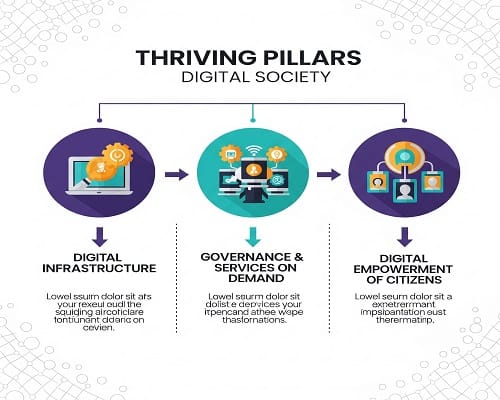
Its vision is built on three core components:
| Pillar | Objective |
| Digital Infrastructure | Access to digital tools, Internet, IDs |
| Governance & Services on Demand | Government services online in real time |
| Digital Empowerment of Citizens | Literacy, Financial access, Digital participation |
Key Achievements of Digital India (As of 2024)
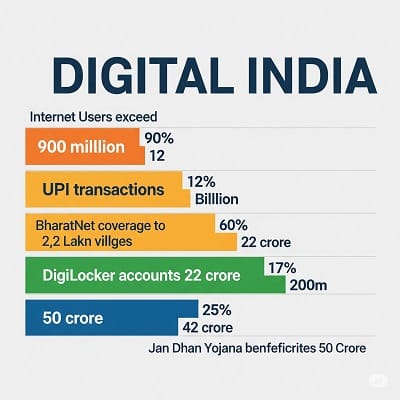
| Parameter | Value/Status |
| Internet users in India | Over 900 million (TRAI 2024) |
| Bharat Net Coverage | 2.2 Lakh+ Gram Panchayats |
| Number of Digital Transactions | 14,000+ Crore (2023-2024) |
| Jan-Dhan Accounts Opened | Over 50 Crore |
| Direct Benefit Transfer (DBT) | 34 Lakh+ Crore transferred |
| Digi-Locker Users | 22+ Crore Users |
| UPI Transactions per Month | Over (12 billion) as of April 2024 |
Major Initiatives under Digital India
| Initative | Purpose | Impact |
| Bharat-Net | High-speed broadband in rural areas | Bridged rural-urban internet divide |
| UMANG | One app for Government Services | 1700+ services in one app |
| Digi-Locker | Online Document Storage | Paperless access to PAN, Adhar etc |
| UPI | Instant Digital Payment | 18.3 Lakh Crore in (April 2024) |
| eNAM | Digital Agricultural Marketplace | Farmers sell crop Online |
| SWAYAM | Free Online Learning | Accessible courses for rural learners |
| PMGDISHA | Digital Literacy for rural citizen | Empowering rural digital access |
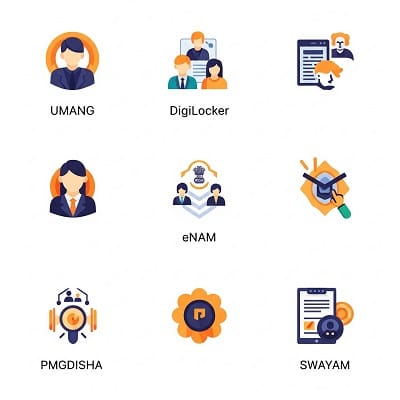
How Digital India Changed Key Sectors
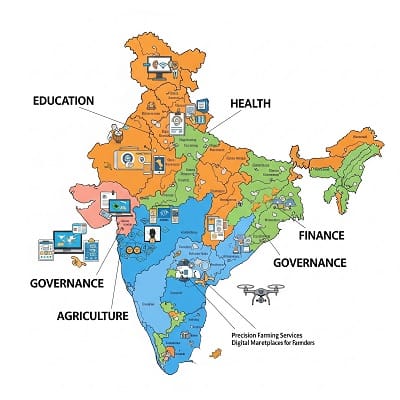
| Sector | Transformation |
|---|---|
| Education | Rise of ed-tech platforms like SWAYAM, BYJU’s, ePathshala |
| Health | eSanjeevani telemedicine, digital health IDs |
| Finance | UPI, Jan Dhan, RuPay cards transforming financial inclusion |
| Governance | RTI, voter ID, tax filing—all digitized for transparency |
| Agriculture | eNAM, weather alerts, digital Kisan platforms helping productivity |
Rural India: A Digital Revolution
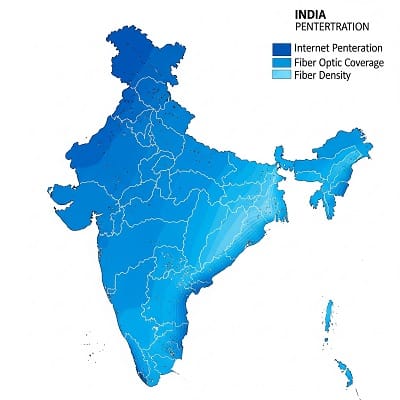
Unlike most people’s perceptions, rural India is at the forefront of digital adoption due to:
- Fiber rollouts of BharatNet
- Low-cost smartphones
- Digital literacy initiatives such as PMGDISHA
- Acceptance of UPI even at kirana stores and mandis
This thrust has made it possible for farmers, students, and women entrepreneurs to leverage digital technology and opportunities like never before.
Challenges in Digital India’s Path
Despite huge progress, challenges remain:
| Challenge | Impact |
|---|---|
| Digital Literacy Gap | Especially in remote and tribal regions |
| Cybersecurity Threats | Rising online frauds and data leaks |
| Infrastructure Issues | Network downtime, power issues in rural areas |
| Language Barriers | Digital services in only a few regional languages |
| Digital Divide | Gender and economic disparities in device access |
Future Vision: What Lies Ahead for Digital India
India aims to become a $1 trillion digital economy by 2026. Here’s what we can expect:
- AI and ML integration in governance and education
- Digital currency adoption (e₹ by RBI)
- Cloud-based public data systems
- Digital India Act to regulate digital platforms & protect citizens
- Massive 5G rollout improving rural connectivity
With proper implementation, Digital India can become the backbone of Viksit Bharat @2047.
Conclusion
Digital India is more than a campaign—it’s a vision for inclusive growth, empowering every citizen, from metro cities to tribal belts. With the right policies, continued investment, and public-private partnership, India is on track to become a global digital superpower.
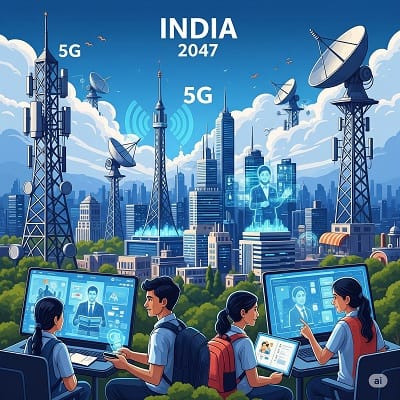
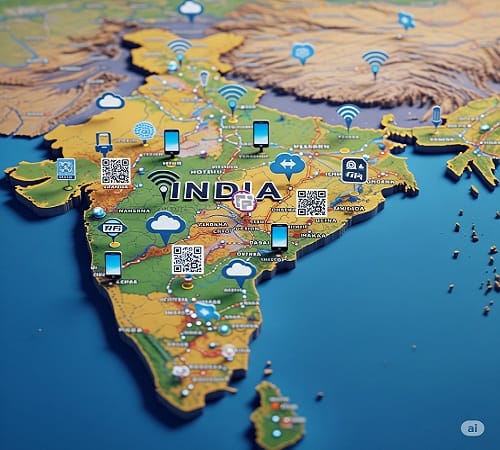
I have been absent for a while, but now I remember why I used to love this website. Thank you, I’ll try and check back more frequently. How frequently you update your website?